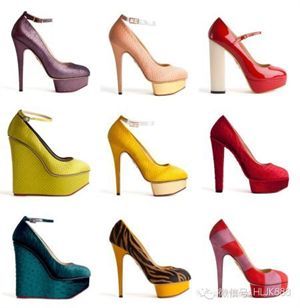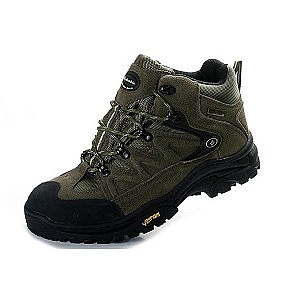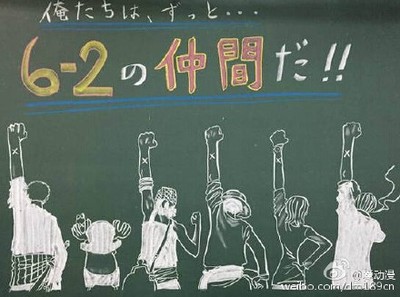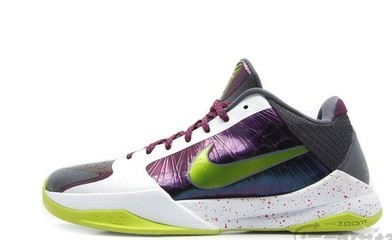England
John Lobb Paris -- Just about the most sublime RTW shoe available (Jermyn II) is made by John Lobb Paris. The shoes with the "bevelled bootmaker" soles (Lobb calls them the "Prestige" line) are usually superlative. They're made from skins that are frequently close to bespoke in quality, the lasts typically used (7000 and 8000) are elegant, and the construction is every bit as good as the best machine-made shoes in the world. The regular line isn't as good -- no bevelled waists, some lasts used are less elegant (8695, 9795), etc. -- but they're still excellent shoes. The prices have gotten completely out of control -- nearly $900 for a regular-line cap-toe bal is outrageous, in my humble opinion. The original John Lobb in London started its Paris outpost in 1901. In 1976, the Paris shop was sold to Hermes, along with the exclusive right to market RTW shoes bearing the Lobb name (except in Japan, where there exists a substandard line of shoes called Lobb's that is completely unaffiliated with either JL St. James or JL Paris). JL Paris shoes are made in the former Edward Green factory in Northampton, England, which is why it appears in this section rather than in the French section.
Edward Green -- Maker of the second most sublime RTW shoe available (Dover) and user of some wonderfully elegant lasts (82, 808, 888, etc.). EG doesn't make an equivalent to JL Paris's bevelled bootmaker shoes, but their shoes are made to standards equal to or better than JL's regular line shoes. EG is known for the antiquing that they apply to their shoes; they get their skins in a "crust" state, without much if any pigment applied. That allows them to apply a wonderful variegated finish to all of their non-black shoes. I think it's beautiful, but others aren't so enthusiastic.
Church's -- They use a lot of corrected-grain leather, they half-line a lot of their non-summer shoes in linen, and a lot of their shoes have rubber top-lifts. Not very nice, if you ask me, especially at the prices that Church's tries to charge. Church's built the first Northampton shoe factory in the second half of the 19th century.
Crockett & Jones -- Crockett & Jones produces two separate lines of shoes. The regular line are solid and well-made are are a good value for the money. The Handgrade shoes are freqently beautiful, particularly if made on the Dimitri Gomez-designed 337 last. The Handgrade shoes retail for perhaps $200 less than Edward Green and appear to be designed to compete with EG. They're good shoes, but I don't think that they're quite there -- the antiquing isn't as good, the last shapes aren't as refined, the standards of construction are just a little bit lower -- but whether you think that they're close enough to make the $200 difference a bargain is an individual decision. In any event, C&J does a tremendous amount of private-label shoe manufacturing at various different quality levels for various different retailers.
Grenson -- This firm's name is a contraction of "William Green and Son," which suggests that once upon a time there might have been some relationship with Edward Green. I'm not certain. This firm is capable of making very high-quality shoes comparable to C&J Handgrade. Grenson used to sell these "Masterpieces" shoes under their own label. Recently, however, Grenson appears to have fallen on hard times and has ceased selling these shoes except as private-label offerings. It's a pity. They were wonderful shoes. The good news is that Stuart's Choice shoes from Paul Stuart are made to the old Masterpieces standards by Grenson. I have never seen any Grenson shoes from the lower lines (Feathermasters and what not), so I can't comment about the level of quality.
Tricker's -- Well-made shoes. Some of them are unexciting or made on inelegant lasts, but the quality of construction is very good and the prices are very reasonable.
Barker -- I have never seen these shoes in the flesh. From their website, it looks like they specialize in low-priced shoes with a high proportion being made from corrected-grain leather. Barker Black is Barker's attempt to go upmarket. They're certainly distinctive (skull and crossbones medallions and whatnot), but I don't know if they're entirely successful aesthetically.
Cheaney -- Cheaney is owned by Church's (at least they were the last time I checked), although I don't think that Cheaney and Church's have cross-pollinated much. The Cheaney shoes that I have seen have been solid, if unexciting.
Loake -- Another English maker that I know little about except what I have seen online, and what I have seen online leads me to believe that Loake produces a profusion of cheap, corrected-grain shoes.
Alfred Sargent -- Alfred Sargent is another maker that produces private-label merchandise for everybody and another maker with a profusion of different lines of varying quality. The Premier and Premier Exclusive lines appear to be very good and very fairly priced.
Schnieder Boots -- I know nothing whatever about Schnieder except that they hold a royal warrant and that most of the footwear they sell is equestrian.
New & Lingwood -- George Cleverley himself used to work in N&L's bespoke operation, as did George Glasgow and John Carnera, the men who inherited Cleverley's name and set up the GJ Cleverley bespoke firm in the early 1990s. Sadly, N&L's bespoke operation is a thing of the past, and most of their shoe offerings appear to be rebadged Grenson and Alfred Sargent shoes. They do have some RTW shoes made from the famous Catherina von Flensburg Russian reindeer hide, and I believe, although I am not certain, that those shoes were made by Crockett & Jones.
Wildsmith -- Another former bespoke maker with a wonderful past and a somewhat less glorious present. My understanding, although I have never seen the shoes, is that Mr. Wildsmith sells rebadged Edward Green and Crockett & Jones shoes at steep markups.
GJ Cleverley -- The sample Cleverley RTW shoes that I have seen are almost certainly made by Crockett & Jones. In fact, a pair of Cleverley bespoke shoes came to me in a RTW box very similar to the light blue box that C&J uses, complete with the last number 337 emblazoned on the side. It is possible that Cleverley uses other makers for some of their models, however.
Peal -- Yet another now-defunct but legendary name in bespoke shoemaking. Brooks Brothers acquired the right to market RTW shoes bearing the Peal name from the Peal bespoke company in the early 1950s (JLibourel below places the date in 1953, and I have no reason to doubt him). The Peal bespoke firm later ceased operations in the 1960s, leaving Brooks Brothers with the only Peal-labeled shoes left. The original BB Peal shoes were made by Edward Green, and, if pictures are any guide, were things of beauty, both in quality of construction (is anything from Edward Green anything else) and in last shape, which was a distinctive high-walled banana sort of thing. A few years ago, BB revived the line, this time with shoes made by Crockett & Jones. More recently, other Peal shoes, probably made by Alfred Sargent, have come to dominate BB's Peal offerings. It's worthwhile to note that just because a particular pair of Peal shoes is made by Crockett & Jones, it doesn't mean that those shoes are made to the standards of any particular C&J-labelled shoes. Retailers will specify the quality level of the upper leather, sole leather, and so on in order to bring the shoes in at a particular price; and shoe factories are happy to accommodate them.
Ralph Lauren -- As everybody knows, Ralph Lauren does not actually make any shoes. He buys shoes. A lot of them. From a lot of different manufacturers in a lot of different countries. So why am I putting him in the England category? Because the most noteworthy shoes bearing his name are made in England. First are the Polo-labeled English-made shoes. These used to be made by Crockett & Jones, and the models sold were identical to models that appeared in the C&J catalogue. In late 2004 or early 2005, this changed. The models were different. The interior markings were different and were unlike anything I had ever seen from C&J. The soles were channeled instead of stitched aloft as they had been previously. My overall impression was that the quality level of the shoes increased. The price certainly did. In any event, I suspect that these shoes are no longer made by Crockett & Jones. I could certainly be wrong, but the interior markings make me suspicious. Second are what used to be called the Purple Label shoes and what are now labeled Ralph Lauren Made In England. These shoes are made by Edward Green and appear to be of the same quality in every respect to EG-labeled shoes. They do come with laquered, lasted trees, unlike regular EG shoes; and many of them are made on 89 last, which is generally only used for RL shoes. They are often available at considerable discount during RL sales.
Italy
A. Testoni -- Three different levels of quality. Regular-line shoes (now called Studium, I believe) are okay, if a little bit fashion-forward. The Black Label shoes are better. They're all Bologna-constructed, and every so often I see a model that I actually could wear. Most of them are a bit too fashion-forward for my tastes, and the prices (over $700 per pair) are high. The third line is called Amedeo Testoni and consists of Goodyear-welted and Norwegian constructed shoes. These are excellently-made but mostly unattractive to my eyes. They're also extremely expensive for what you're getting.
Bruno Magli -- Magli has a number of different lines. The only line worth talking about is the Platinum line. They appear to be well made (I think that they're Blake-constructed), but the designs are a bit over-the-top for me. They're also very expensive for the quality. I don't believe that Magli actually owns any production facilities but rather contracts all production out to third parties.
Silvano Lattanzi -- Handmade shoes of impeccable quality. Lattanzi was originally brought to the United States by Louis Boston and is a pioneer here of handmade shoes and very high prices. He's best known for gunboat-sized Norwegian- or Bentivegna-constructed shoes with flashy antiquing, but he can do more subdued styles as well.
Kiton -- Kiton's shoes have a eye-popping antiquing similar to what one sees on Lattanzi shoes, but the last shapes tend to be sleeker and the designs, while unusual, are generally more conservative.
Sutor Mantellassi -- I will admit that I have a soft spot in my heart for Sutor Mantellassi shoes. I love the way that they do Norwegian construction (with a single row of stitching rather than the flashier two braided rows favored by other makers) and their innovative use of skin stitching. Like most Italian producers, Mantellassi has more than one line: a Blake-constructed line of good but not outstanding quality and a Norwegian or Goodyear-constructed line that is of excellent quality.
Gravati -- One of my favorite Italian manufacturers, not because there aren't better producers out there (there are) but because Gravati makes an excellent shoe for a reasonable price and because they are almost infinitely flexible in what they can and will produce. Over the years, I have placed many, many special orders for Gravati shoes, and they are always right and of remarkably consistent quality. Their shoes are mostly Blake- and Blake/Rapid-constructed, but they will make Goodyear-welted shoes on request.
Borgioli -- Borgioli is a major producer of private-label shoes, some of which are made to execrable standards of quality and which Borgioli would never want to claim. Hey, they need to survive. The shoes produced under their own label are very good. Most are Blake-constructed. A few are Norwegian-constructed, and they are excellent.
Romano Martegani -- Martegani operates a very good Blake and Blake/Rapid factory, and they are endlessly flexible. Gravati will almost never say no to a customer's cockamamie ideas for a shoe, but they will say no sometimes. Martegani won't. These are good, not excellent, shoes offered for a reasonable price. User Ron Rider, formerly the shoe manager at Franco's in Richmond, is now the US distributer for Martegani.
Salvatore Ferragamo -- Like Bruno Magli, Ferragamo doesn't own any of their own production facilities. Also like Bruno Magli, they market shoes of widely varying qualities. The Studio line shoes are cemented and not worth the money they cost. The Lavarazione Originale line shoes are generally Blake-constructed and are often attractive and well-made, if overpriced. The Tramezza line shoes are Goodyear-welted and are very good. Ferragamo has a joint venture with Zegna called Zefer, and Zefer produces all of the Zegna-labelled shoes. I believe, although I am not certain, that Zegna owns the production facilities for these shoes, some of which are very good.
StefanoBi -- I don't know a whole lot about StefanoBi shoes, but I believe that this was Stefano Branchini's original company and that he sold it to LVMH in the 1990s. The StefanoBi factory apparently produces shoes for all of the LVMH companies, including Berluti. The only pair of StefanoBi shoes that I ever saw (square-toe tan wingtip balmorals) were attractive in a flashy, Italian sort of way.
Stefano Branchini -- If I recall correctly, I believe that Sr. Branchini started this company after he sold StefanoBi to LVMH. I have never seen any of these shoes in the flesh, and I really can't comment on the quality of construction. What I can say is that these shoes, to me, represent everything that is wrong with Italian shoemaking today. They're ugly and over-the-top. It's like Sr. Branchini took all that is excessive about Lattanzi shoes and used it as a toned-down model for what he wanted to do.
Artioli -- I believe, although I am not sure, that Artioni shoes are mostly Bologna-constructed. They look to be well-made and are undoubtedly very flexible. I have two primary complaints with Artioli shoes. First is the leather that they tend to use: it's that glove-leather-looking stuff that Italian shoes were known for in the 1980s. Sure, it's soft, but it doesn't wear very well. Secondly, they have succumbed to the witch's shoes trend: their shoes nowadays tend to have elongated, needle-nose snouts that I think are extremely ugly.
Santoni -- Santoni produces many, many different lines of shoes. The Nuvola shoes have natural rubber soles and are decently-constructed and comfortable Blake shoes. The Classic line consists of some Bologna, some Blake, and some Goodyear shoes. The new Bologna models, in particular, are made on a very attractive round-toe last and are extremely flexible. The Fatte a Mano line consists of some Blake and some Goodyear, Norwegian, or Bentivegna shoes. Many of the Fatte a Mano models are, well, ugly, with overly-elongated, pointy, witch's-shoes-looking snouts; but when they're right, they're very, very right. Regardless, while you can complain about the looks of the non-Blake Fatte a Manos, you can't complain about the construction. It's excellent.
Moreschi -- Moreschi is yet another good maker of mid-range Blake-constructed shoes. Much of what they sell is, ah, exuberant. Combinations of blue peccary with blue ostrich leg are to be found. You don't have to buy those. The normal shoes are well-made and reasonably priced. Probably a small step below Gravati in quality of construction, and much below Gravati in flexibility of offerings and receptivity to special orders.
Fratelli Peluso -- I have seen a number of different types of Peluso shoes. The first is a line of Goodyear-welted shoes that look to be well-constructed and fairly-priced. From the website, it appears that these shoes have a gemmed linen feather and are machine-welted just as most English welted shoes. Given the price (under $500 per pair), this is to be expected. Peluso also makes a line of Blake-constructed shoes and yet another line of Blake-constructed shoes sold under the "Peluso for To Boot Adam Derrick" label. Both appear to be relatively well-constructed shoes offered for reasonable prices.
Barrett -- I have never seen a Barrett shoe in person, but their website certainly shows a number of beautiful models. Although the website doesn't specify the construction methods used, it's likely that most of them are Blake or Blake/Rapid constructed, with a few Norwegian models.
Bontoni -- This company has made a recent splash on the US market, getting themselves carried by Louis Boston and Stanley Korshak. The shoes are very much of a piece with a lot of high-end Italian shoes nowadays: a bit clunky, with eye-popping antiquing. If you like that sort of thing, these shoes appear to be well-made versions of the aesthetic. The problem is that they're grossly overpriced. They're Blake/Rapid-constructed, and the channel for the Rapid sole stitching isn't closed. Frankly, the quality of construction is inferior to Gravati or Martegani, in my opinion; and yet the retail price for the calfskin models is nearly $1000 per pair.
Bonora -- Florentine bespoke maker that has branched into RTW. I don't know if these are factory-made shoes of if they are made in Bonora's workshop. Given the prices, I suspect that the former is more likely than the latter. The shoes themselves appear to be mostly Goodyear-welted and staid in their styling.
De Tommaso -- A specialist in handmade Goodyear, Norwegian, and Treccia shoes. See Ron Rider's post below.
Zegna -- A few years ago, Zegna began a joint venture with Ferragamo called Zefer (oh, the originality!) to produce Zegna-labeled shoes. I suspect, although I do not know for sure, that Zegna actually owns the production facilities for these shoes. In any event, they run the gamut from the very ordinary to the very nice. Most of the lower-priced versions are either cemented or Blake-constructed. The top-of-the-line shoes, however, are Goodyear-welted and very attractive. As with a lot of Zegna's products, they are probably overpriced for what they are, but what they are appears to be excellent quality shoes.
France
JM Weston -- The triple-soled hand-welted Chasse model is amazing and one of the true classic shoes available today. The other shoes aren't made to the same standards, but they are well-made machine-made welted shoes. I don't think that they're quite to EG standards, but they're not priced like EG, either. The Perry-designed Weston shoes are extremely distinctive. People either love them or hate them. I happen to love them.
Berluti -- I will admit that I feel betrayed by Berluti. Since I became aware of high-end shoes, Berluti's classic Club three-eyelet wholecut has been on my list of sublime RTW shoes. I wanted a pair terribly. Then Barney's started carrying Berluti, and I got to see the shoe in person. Talk about a let-down. There's just nothing special about the construction. Most Berluti shoes are Blake-constructed in the StefanoBi factory in Italy, and, frankly, you can get a better-constructed shoe for $700 less from Gravati. It just doesn't seem right.
Aubercy -- Aubercy's shoes typically are flashy, and I believe that most of the RTW is Blake-constructed in Italy. Nevertheless, I like them. To me, they succeed where Berluti's RTW fails. But that might be just me.
Altan -- Another maker that I know very little about. According to Étienne below, Altan's shoes are Blake-constructed, made in Italy, and fashion-forward, concentrating on extreme patination, a la Berluti and others.
Marc Guyot -- I know nothing whatever about the quality or construction methods of these shoes. You can see as much as I can from looking at the pictures on the website. According to Étienne below, these shoes are Blake-constructed and Italian-made.
Heschung -- Heschung is a specialist in rubber-soled Norwegian-constructed country shoes, although they make a full range of other styles, from driving mocs to dress shoes. For a time, they made some of JL Paris's more casual shoes, although I believe that this has been discontinued. I have very little experience with them, but I have been impressed with the shoes that I have seen, especially for the price. Heschung is based in Alsace; but I believe I have read that they are moving at least some of their production out of France, although to where I can't remember.
Corthay -- I believe that Corthay's initial foray into RTW shoes was composed of a line made for them in Spain. Now, I am told, their RTW shoes are made in a factory outside Paris. I don't know about the standards of production, but the pictures make them look very nice indeed.
Finsbury -- I know nothing about this maker. Help me out, guys.
Bexley -- In what must by now seem like a recurring theme, I don't know a bit about this maker. They offer good-looking Goodyear-welted shoes at good prices, but I have never seen them and know nothing of their quality.
Loding -- This maker seems to be similar to Bexley in that they offer good-looking Goodyear-welted shoes for low prices and that I know nothing about their quality.
Paraboot -- More well-priced, attractive Goodyear-welted shoes. Unlike the preceeding two makers, I do know a little bit about Paraboot: people whose opinions I trust tell me that these are well-made. That's about all I know.
Spain
Carmina (Albaladejo) -- Carmina is shell cordovan specialist, but instead of sticking with the standard deep burgundy Color 8, they like to branch into more exotic colors like green, blue, tomato red, and whiskey. They do make calfskin shoes, too. In the past, Carmina has suffered from inelegant lasts, although over the last two years or so, they have remedied that with the Philly 2 and the Rain. The shoes themselves are Goodyear-welted and may have a slightly lower quality of construction than the very best in the RTW shoe industry; however, they are good shoes that are typically offered at very good prices.
Yanko -- I know very little about Yanko. Others have commented that they make solid, if unexciting Goodyear-welted shoes, and that seems reasonable given the models shown on their website.
Pertini -- According to Ron Rider, currently the US agent for Martegani, formerly the manager of the shoe department at Franco's, an excellent independent men's store in Richmond, VA, Pertini shoes are the product of the Igmapa factory. Some of these shoes are Goodyear-welted, although it appears from the pictures on the website that not all of them are. I believe that Ron has said that these shoes offer good value for the money, but other than this statement and the pictures on the website, I know very little about them.
Central and Eastern Europe
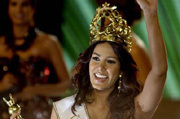
Vass -- Vass gets a lot of discussion on the forums, mostly, I think, because Gabor Halmos and Andrew Harris, the faces of Vass in the United States, participate here. That attention is well-deserved. Vass shoes are handmade products made to extremely high standards, and they are works of art. They are among the finest RTW footwear that you can find anywhere, at any price. Their traditional Hungarian lasts are distinctive but not for everybody. Recently, though, they have branched into sleeker last shapes such as the P2 and especially the F and the U, both of the latter developed for the Roberto Ugolini RTW shoes sold in Japan and made by Vass. In case it's not obvious from the preceding, I think the world of Vass shoes and am conflicted about the possibilities of Gabor and Andrew having success in establishing the brand here in the United States only because I fear that it will mean increased prices. For a more extended discussion of Vass shoes, see my post here.
St. Crispin's -- St. Crispin's is based in Vienna, although both their bespoke shoes and their RTW shoes are made in Romania. From the descriptions on their website, these are handmade shoes; and I like the look of them very much. The last shapes are Central European, with high walls at the toe; but they're more elegant than, say, Vass's traditional lasts (not F, U, and P2 -- think Peter or 3636) or Dinkelacker's.
Heinrich Dinkelacker -- Aside from Vass, Dinkelacker makes the only legitimate RTW Budapesters with anything like a wide distribution. It's a German company, although I believe that the shoes are made in Humgary. They're not for the faint of heart or for those who want a sleek, minimizing shoe. They're big gunboats, and proud of it. I have never seen any in person, but I like the way they look. If only they were distributed in the US.
Bally -- Bally is a Swiss company, and if their website can be believed, they still maintain a factory in Caslano, Switzerland. Jim Pierce, the owner of the shoe department at Harold's in the Heights in Houston likes to reminisce about how years ago, Bally was the first company that he ordered spec shoes from. Sadly, Bally decided that its future was in becoming a fashion brand, and they degraded their quality and became unwilling to work with independent fiddlers like Jim. What I've seen on their website about their Scribe line of shoes is encouraging, however. The shoes look to be, well, solid, double-soled things; but all the verbiage about construction is right. I hope that this signals a return of Bally to the land of quality shoes.
United States
Alden -- Along with Allen-Edmonds, one of the two premier US makers of shoes. Alden is a shell cordovan specialist, and their shell cordovan shoes have something of a cult following in Japan and Germany. For the most part, aside from limited production spec shoes made for a few retailers like Alden of Carmel, Alden shoes are extremely conservative, both in design and last shape. The latter is frequently chunky and blob-like, particularly on the shell cordovan models. Alden makes both calfskin and shell cordovan shoes for Brooks Brothers, sold under the Brooks Brothers label.
Allen-Edmonds -- Allen-Edmonds is a much bigger company than Alden, and they're more willing to take risks and bring out new styles, some of which work and some of which are ugly, than is Alden. Their largeness is also the reason why they're easier to find and to find at a discount. I'm not going to get into the whole Alden vs. Allen-Edmonds debate except to say that I don't like Allen-Edmonds' use of 360-degree welting on all of their shoes and that I wish they didn't use uncovered insoles. There is no doubt that Allen-Edmonds makes good-quality shoes and that it would be difficult to go wrong spending $300 on a pair.
Johnston & Murphy -- I mention Johnston & Murphy here as a general lament about what has happened to US shoe companies. It used to be that J&M, Cole Haan, Stacey Adams (yes, Stacey Adams), Nettleton, and others joined with Alden and Allen-Edmonds to produce excellent welted footwear. One by one, all except Alden and Allen-Edmonds either shut down or shipped production overseas and went downmarket. J&M was the last holdout, but, alas, they couldn't resist forever. A few years ago, they shut down the factory in Tennessee and moved almost all production overseas (except for their Crown Aristocraft line, which continue to be made in the US; I can't say whether they are made in Tennessee or at another US facility). It's a shame, really. If you can find any of the NOS (New Old Stock) J&M Handmades around in your size, snap them up. They will never be made again.
 爱华网
爱华网